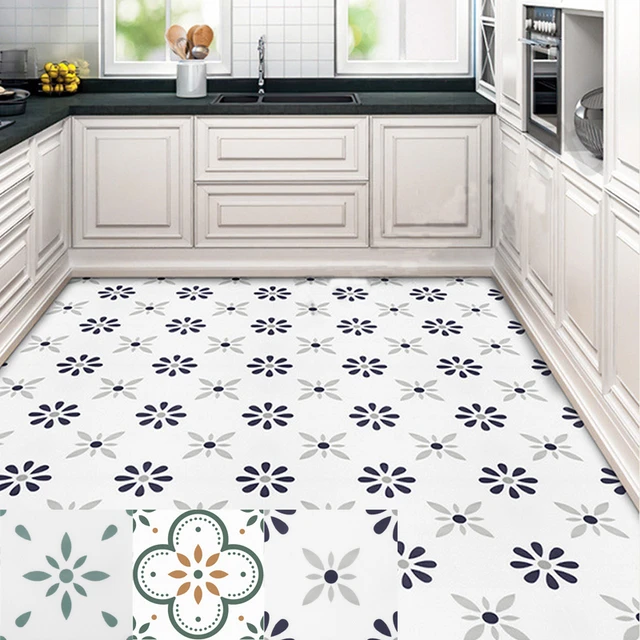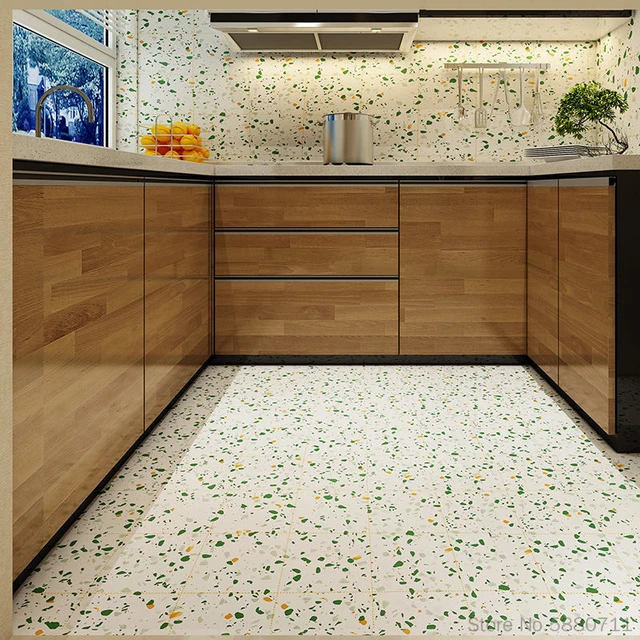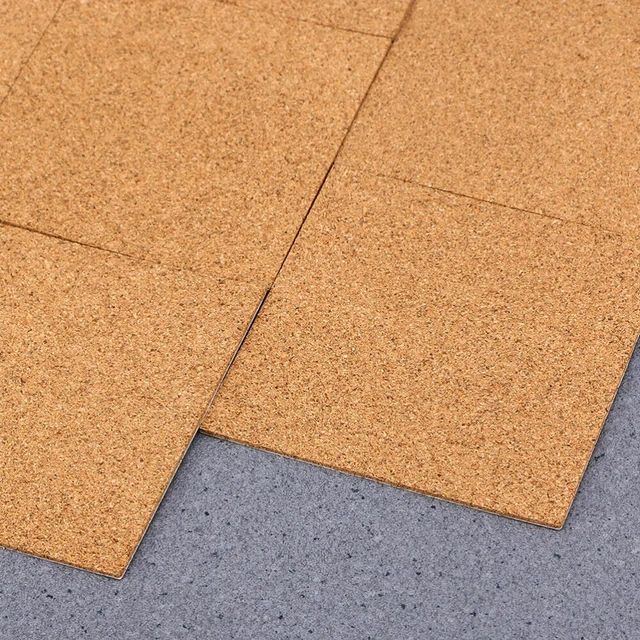 Introduction:
Introduction:
Selecting the right flooring for your kitchen is essential, as it needs to withstand high foot traffic, spills, and potential water damage. Additionally, it should be durable, easy to clean, and complement the overall style of your kitchen. With a wide range of flooring options available, making a decision can be overwhelming. In this comprehensive guide, we will explore various flooring options for kitchens, discussing their features, benefits, and considerations. Whether you prefer the warmth of hardwood or the practicality of tile, this guide will help you choose the perfect flooring for your kitchen.
 Hardwood Flooring
Hardwood Flooring
Natural Beauty:
Hardwood flooring adds a timeless and elegant look to any kitchen.
The natural grain patterns and warm hues create a cozy and inviting atmosphere.
Durability and Longevity:
Hardwood floors are durable and can withstand heavy foot traffic.
With proper maintenance and care, they can last for decades, making them a worthwhile investment.
Maintenance:
Hardwood floors require regular sweeping and occasional refinishing to maintain their beauty.
Spills should be promptly cleaned to prevent water damage.
Laminate Flooring
Affordability:
Laminate flooring offers a cost-effective alternative to hardwood.
It mimics the look of natural materials, including hardwood and stone, at a fraction of the price.
Durability and Resistance:
Laminate flooring is resistant to stains, scratches, and fading.
Its sealed surface makes it easy to clean, an ideal choice for busy kitchens.
Installation:
Laminate flooring is relatively easy to install, and many options come with click-lock systems, eliminating the need for glue or nails.
 Tile Flooring
Tile Flooring
Versatility:
Tile flooring offers a wide range of design options, including different colors, sizes, and patterns.
From classic ceramic to modern porcelain or natural stone, there is a tile to suit any kitchen style.
Durability and Water Resistance:
Tiles are highly durable, resistant to moisture, and waterproof.
They are an excellent choice for kitchens where spills and water are common.
Maintenance:
Tiles are easy to clean and maintain, requiring regular sweeping and occasional mopping.
Grout lines may need periodic resealing to prevent staining or discoloration.
Vinyl Flooring
Affordability and Variety:
Vinyl flooring offers many design options, including wood-look and stone-look options.
It is available in different colors, patterns, and textures to suit any kitchen style.
Durability and Comfort:
Vinyl flooring is durable, water-resistant, and comfortable underfoot.
It provides a softer surface compared to harder materials like tile or stone.
Low Maintenance:
Vinyl flooring requires minimal maintenance, needing only regular sweeping and occasional damp mopping.
It is highly resistant to stains and spills, making it a suitable choice for kitchens.
Considerations and Final Tips
Budget:
Set a budget for your kitchen flooring project and consider the costs of materials, installation, and ongoing maintenance.
Lifestyle and Functionality:
Consider your lifestyle and how the kitchen will be primarily used.
If you have pets or children, durability and stain resistance may be essential factors to consider.
Style and Aesthetic:
Choose a flooring option that complements the overall style and design of your kitchen.
Consider factors such as color, texture, and pattern to create a cohesive and appealing look.
Professional Installation:
Some flooring options, like tile or hardwood, may require professional installation for the best results.
Consult with flooring experts or contractors to ensure proper installation and maximize longevity.
 Here are some tips on how to coordinate your kitchen floor with the overall kitchen design:
Here are some tips on how to coordinate your kitchen floor with the overall kitchen design:
When choosing a kitchen floor, it is important to consider both aesthetic appeal and practicality. Here are some tips on how to coordinate your kitchen floor with the overall kitchen design:
Consider your kitchen style:
Determine the style and theme of your kitchen. Whether it’s modern, traditional, farmhouse, or industrial, choose a flooring material that complements the overall design and creates a cohesive look.
Assess color harmony:
Look at the color palette of your kitchen, including the cabinetry, countertops, and walls. Choose a flooring material that complements or contrasts with these elements. For instance, if you have a mostly neutral color scheme, you can opt for a bold or patterned flooring to add visual interest.
Harmonize with the cabinets:
Consider the color and material of your kitchen cabinets. Wood cabinets work well with various flooring options, while lighter cabinets often pair nicely with darker flooring. Make sure there is a pleasing balance between the cabinets and the floor to create a harmonious visual flow.
Balance with countertop materials:
If your kitchen has a prominent countertop material, such as granite or marble, select a flooring material that complements it. For instance, if you have a bold countertop pattern, choose a flooring material that is more neutral to avoid overwhelming the space.
Think about durability and maintenance:
Kitchens are high-traffic areas with the potential for spills and messes. Consider choosing flooring materials that are durable, easy to clean, and resistant to moisture and stains. Options like ceramic tile, vinyl, or laminate flooring are popular choices for their practicality in kitchen environments.
Test samples:
It’s always a good idea to bring home samples of flooring materials to see how they look in your kitchen’s lighting conditions. Test them against your existing kitchen elements to ensure they complement each other before making a final decision.
Remember, the goal is to create a visually appealing and functional kitchen space. Take into consideration your personal preferences, the style of your kitchen, and the practicality of the flooring material to find the perfect match for your kitchen floor.
Here are some current trends in kitchen flooring:
Popular trends in kitchen flooring can vary over time, but here are some current trends in kitchen flooring:
Luxury Vinyl Plank (LVP):
LVP has gained popularity due to its durability, water resistance, and ability to mimic the look of hardwood or stone at a more affordable price. It offers a wide range of styles, including realistic wood grains and various color options.
Porcelain/Ceramic Tile:
Porcelain or ceramic tiles have long been popular in kitchens due to their durability, wide range of design options, and resistance to water and stains. Large-format tiles and patterned tiles are particularly trendy currently. Wood-look tiles are also gaining popularity for their ability to provide the warmth of wood with the durability of tile.
Engineered Hardwood:
Engineered hardwood is a popular choice for those who desire the warmth and authenticity of real wood flooring in their kitchen. It is more resistant to moisture compared to solid wood, making it suitable for kitchens. Options like distressed or hand-scraped finishes are particularly sought after.
Concrete Flooring:
Polished concrete floors have become a trendy choice for a modern and minimalist aesthetic in kitchens. Concrete offers durability and a sleek, industrial look. It can be stained or dyed in a variety of colors and patterns to complement any kitchen style.
Sustainable and Eco-Friendly Options:
As sustainability becomes more important, eco-friendly flooring choices are gaining popularity. Bamboo and cork flooring are renewable and eco-friendly materials that provide warmth and a unique aesthetic to kitchens.
Colorful and Patterned Flooring:
Bold and vibrant flooring options are becoming more prevalent in kitchen design. Geometric patterns, mosaic tiles, or colorful tiles can add personality and visual interest to the space, especially in kitchens with neutral color schemes or minimalist designs.
Ultimately, the choice of kitchen flooring depends on personal preferences, lifestyle, and budget. It is important to select a flooring material that not only fits the current trends but also aligns with your needs in terms of durability, maintenance, and style.
 Conclusion:
Conclusion:
Selecting the right flooring for your kitchen requires careful consideration of durability, maintenance, style, and budget. By understanding the features and benefits of various flooring options, as outlined in this comprehensive guide, you can make an informed decision for your kitchen. Whether you choose the timeless beauty of hardwood, the versatility of tile, the affordability of laminate, or the practicality of vinyl, your chosen flooring should withstand the demands of your kitchen while adding aesthetic appeal. With the perfect flooring, your kitchen will become a functional and visually pleasing space for cooking, gathering, and creating memories.
